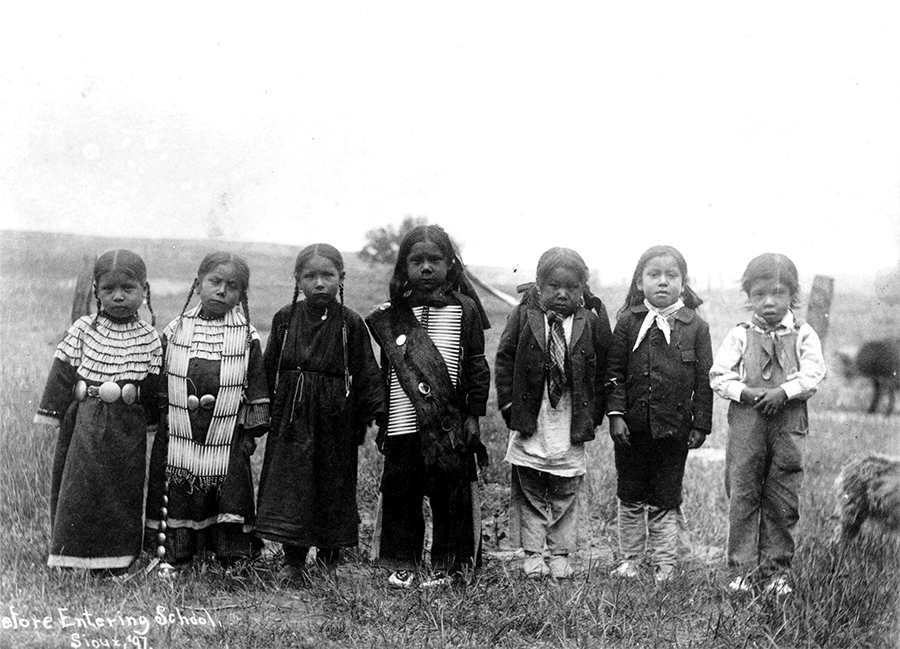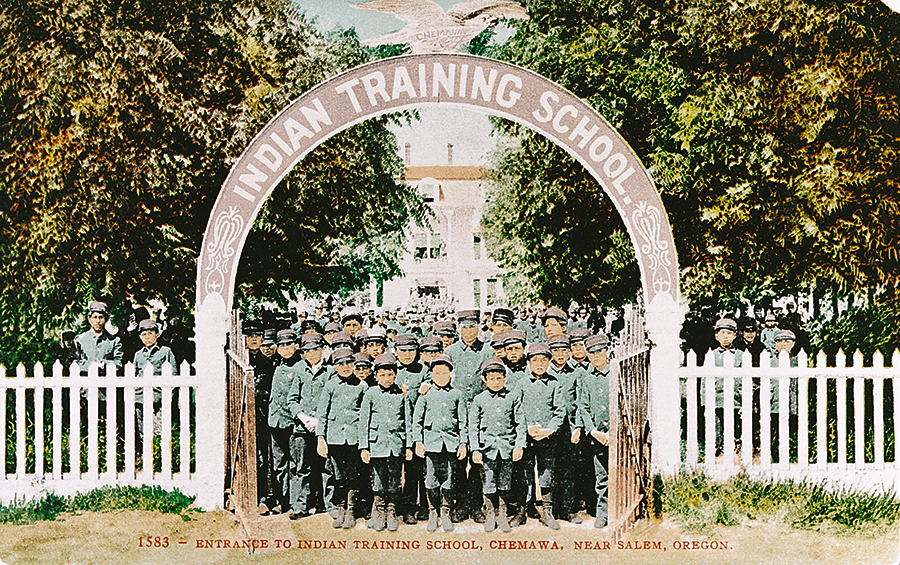Away from Home:
American Indian Boarding School Stories
January 28 – March 16, 2022
Exhibition Overview
Beginning in the late 19th century and into the 20th century, the United States government aimed to eradicate Native American cultures through forced assimilation of children via federally operated, off-reservation boarding schools. Thousands of children were removed from their families and communities, and were stripped of their languages, religious practices, and community connections. They were trained for domestic labor and forced to work in strict regulated environments. Students sometimes went years without familial contact, which caused lasting, multi-generational impact.
Away from Home: American Indian Boarding School Stories, on view at The James Museum January 28 through March 16, shares the experiences of some of the students who were affected. Historical photographs, objects, interactive timelines, and interviews tell individual stories of pain, heartbreak, and resilience. While the Indian boarding school system caused generational trauma, Native American tribes today are working to heal, reclaim, and share their cultures and this hidden chapter in American history.
“Art is story and museums have a unique ability to share stories that allow us to see, feel and learn of lived human experience in a powerful way. This exhibition on American Indian Boarding Schools is an opportunity to learn about our past and make connections that inform our present and future,” said Laura Hine, Executive Director at The James Museum.
Native Americans responded to the boarding school experience in complex and nuanced ways. Stories of student resistance, accommodation, creative resolve, devoted participation, escape, and faith in oneself and heritage speak individually across eras. Boarding schools were designed to remake American Indians, but it was American Indians who eventually changed the schools. After graduation, some students became involved in tribal political office or the formation of civil rights and Native sovereignty organizations. The handful of boarding schools remaining today are Native-run, and they embrace Indigenous heritage, languages, traditions, and culture.
“Some of the artists in our collection attended American Indian boarding schools, and we are showing their artwork alongside the historical documents and personal stories in this exhibition,” said Emily Kapes, Curator of Art. “Their boarding school experiences had a profound and lasting impact on their art, further demonstrating the effect boarding schools had on generations of Native Americans.”
This exhibition is made possible by NEH on the Road, a special initiative of the National Endowment for the Humanities. It was adapted from the permanent exhibition, Away from Home: American Indian Boarding School Stories, organized by The Heard Museum in Phoenix, Arizona. It was adapted and toured for NEH on the Road by the Mid-America Arts Alliance. Any views, findings, conclusions, or recommendations expressed in this exhibition do not necessarily represent those of the National Endowment for the Humanities.
Due to the sensitive content, this exhibition is recommended for ages 13 and up.


Image and Exhibition Credits
This exhibition is made possible by NEH on the Road, a special initiative of the National Endowment for the Humanities. It was adapted from the permanent exhibition, Away from Home: American Indian Boarding School Stories, organized by The Heard Museum in Phoenix, Arizona. It was adapted and toured for NEH on the Road by the Mid-America Arts Alliance. Any views, findings, conclusions, or recommendations expressed in this exhibition do not necessarily represent those of the National Endowment for the Humanities.
Sioux children on their first day at school, 1897; photograph, variable size; Courtesy of Library of Congress.
Students posing at entrance to Chemawa Indian Training School, near Salem, Oregon, 1905; photograph, variable size; Courtesy of Pacific University Archives.